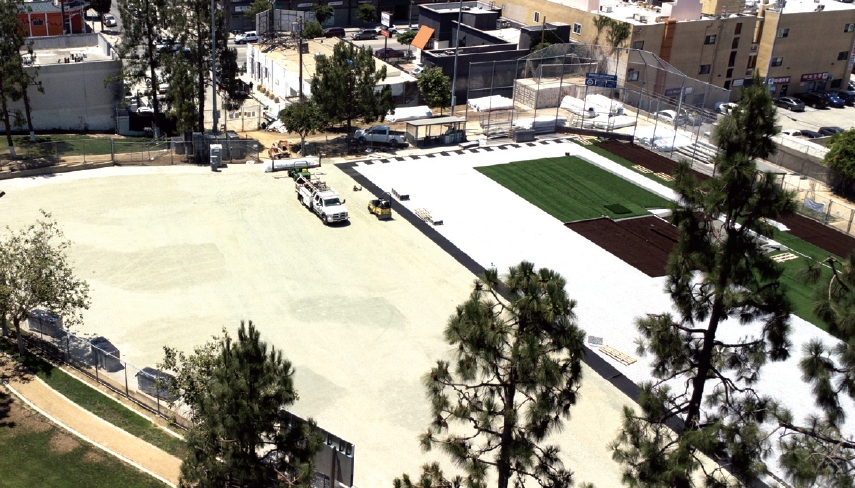Efforts to mitigate the chronic shortage of green space in Los Angeles’ Koreatown are gaining traction, with local civic leaders and policymakers actively proposing viable solutions. Strategies under consideration include repurposing underutilized school grounds, rehabilitating idle public land, and ensuring transparency and accountability in the allocation of park development fees.

Bill Robinson, Chair of the Wilshire Center–Koreatown Neighborhood Council (WCKNC), stated in an interview with The Korea Daily recently, “Koreatown is one of the most underserved neighborhoods in Los Angeles in terms of green space.” He noted that while the neighborhood has experienced a rapid increase in high-density residential development, the park fees assessed per apartment unit have not been effectively reinvested into expanding local green infrastructure. “It is essential to closely examine whether those funds have been appropriately directed toward the creation and maintenance of public parks,” he emphasized.
As a practical and cost-efficient approach, Robinson proposed the conversion of school properties into green spaces. “Most schools within Koreatown sit on expansive parcels relative to their current student populations — a trend consistent across the LA Unified School District (LAUSD),” he said. “The City should work collaboratively with LAUSD or consider acquiring portions of these properties for public use.” Robinson argued that declining enrollment presents a timely opportunity to integrate school lands with community green space initiatives.
He also proposed a new vision for the long-stalled site designated for the Korean American National Museum, located at Vermont Avenue and 6th Street. “The land was granted by the City, yet the museum project has made no visible progress in recent years,” he remarked. “We should consider transforming the site into a Korean traditional cultural park, much like the Japanese and Chinese communities have done with their respective cultural gardens.” He added that such a project could potentially attract funding through partnerships with institutions such as Korea’s Ministry of Culture, Sports and Tourism.
Robinson further emphasized that any green space expansion must incorporate long-term sustainability. “Beyond simply increasing park acreage, we must undertake environmental remediation, including soil quality assessments and habitat restoration, to ensure the viability of the green ecosystem,” he said. “This is a collective endeavor that requires the full engagement of the Korean American community.”
To this end, Robinson disclosed plans to form a working coalition with major Korean American organizations, including the Korean American Federation of Los Angeles (KAFLA). He also noted that the WCKNC is in ongoing communication with City Councilmember Heather Hutt, who represents District 10, to advance these initiatives at both the city and council levels.
Councilmember Hutt, who introduced a motion in September of last year to expand Seoul International Park, has remained a vocal advocate for green space development. The proposal calls for the permanent closure and conversion of segments of Irolo Street (between San Marino Street and Normandy Avenue) and Normandy Avenue (between Olympic Boulevard and Irolo Street) into parkland.
“Seoul International Park is a vital community asset visited by thousands,” Hutt said. “Its expansion will create a revitalized green space that enhances the quality of life for residents and visitors alike.” She further committed to a comprehensive neighborhood strategy that includes bolstering small business support, improving public safety through law enforcement coordination, and addressing persistent sanitation concerns.
Councilmember John Lee of District 12, although not representing Koreatown, has publicly endorsed the expansion plan. “Koreatown is one of Los Angeles’ most historically significant neighborhoods,” Lee stated. “Ensuring access to modern, functional parks is a responsibility we share. I commend Councilmember Hutt’s community-focused approach and hope to see this vision brought to fruition.”
BY KYEONGJUN KIM [kim.kyeongjun1@koreadaily.com]




